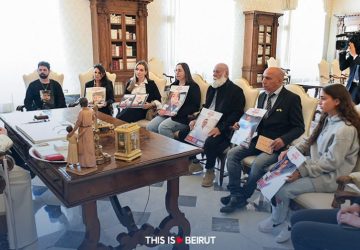Listen to the article
Renowned as the world’s oldest active military force and also its smallest, the Vatican’s Swiss Guard boasts a storied legacy, built upon the unwavering mission of protecting the Pope and his residence at the risk of its members’ lives. Today, Monday, May 6, 34 new recruits will join the ranks of the Swiss Guards. They will take the oath to Pope Francis within Saint Damase Courtyard at the Vatican, amidst stirring melodies and rhythmic beats of drums. While the current trend at the Vatican leans towards simplicity, the Swiss Guard’s protocol remains steadfast.
Despite their billowy, colorful uniforms, ruffled collars, feathered helmets and 15 kg armor, the members of this armed corps are sometimes likened to medieval jesters. However, within the Vatican, they embody a force not to be underestimated.
Historical Background
While the Vatican’s army may now seem picturesque and symbolic, it hasn’t always been so. For centuries, its power in Italy was a potent force to be reckoned with.
The first papal army traces its roots to 1049 when Pope Leo IX recognized the need to equip the Papal States for the defense of Rome and its vassal cities. It developed in the mid-15th century thanks to Giovanni de’ Medici, cousin of Pope Leo X, evolving into a model army, renowned for its innovative techniques and tactical vigor, which led to its triumph in numerous battles.
The sack of Rome in 1527 by Charles V, and the sacrifice of 142 Swiss mercenaries to save the Pontiff’s life, marked a pivotal moment in the evolution of the papal army. Arriving in Rome on May 6, 1506, pursuant to an agreement between the Pope and the cantons, the Swiss mercenaries continued to serve the Holy Father steadfastly thereafter. Hence, the significance of today, May 6, 2024, as the date for the swearing-in ceremony of 34 new guard members, bringing their total to 135.
Training
The training of the Swiss Guards unfolds in two stages. During the initial phase, recruits learn about the different services of the guard as well as all that occurs within the Vatican, and they undergo intensive Italian courses.
The second phase of training unfolds in the canton of Ticino, Switzerland. While the halberd remains their traditional weapon, recruits are instructed in combat arms and self-defense techniques. Stun guns were recently included, along with self-defense and counter-terrorism techniques following the 1981 assassination attempt on John Paul II.
The guards also undergo training in verbal communication, as they are often regarded as the mirror of the City. Consequently, they go through intense psychological training to ensure that they possess the mental capacity to adapt to this way of life.
The Pope refers to them as “his messengers” because a substantial part of their mission involves providing comfort to those who seek assistance at the Vatican.
Criteria
To become a Swiss Guard, candidates must be Swiss, male, aged between 19 and 30, stand over 174 cm tall, unmarried and fervent Catholic with an irreproachable character.
The recruit must have completed their Swiss military service and commit to serving the Sovereign Pontiff for a minimum period of two years. Only after five years of service are they authorized to marry.
Their uniform was crafted in the early 20th century by Jules Repond, and inspired by Raphael and the Renaissance. The pattern shifts between midnight blue and duck yellow, accentuated by the emergence of blood-red from the undergarment.
Guards work in six-hour rotational shifts and earn a monthly salary of 1,200 euros net. They are required to reside within the Vatican walls, in dormitories specifically designated for them.
The duty of the Pope’s army is to protect Pope Francis, his residence, the entrances to the Vatican, and uphold order within the City. Additionally, officers and non-commissioned officers accompany the Pope on his international travels.
During his speech at the swearing-in ceremony for the 34 new recruits on Monday, May 6, Pope Francis renewed his gratitude to the elite corps for their presence at the Vatican. He underscored “their distinction for their exceptional quality and their kind, attentive, and scrupulous approach,” as well as their ever “generous and diligent” service. Furthermore, he expressed gratitude towards their families for instilling a good education in their children.





